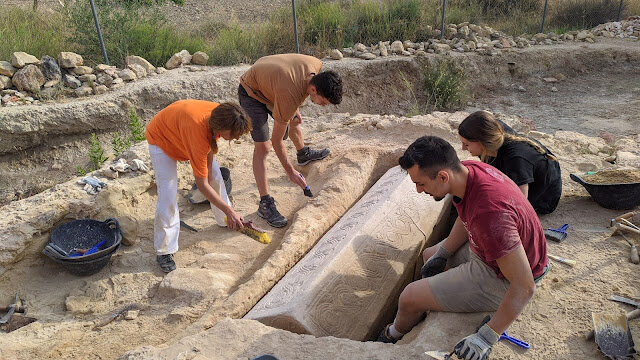A research team led by Rafael González Fernández, professor of Ancient History at the University of Murcia, has discovered a spectacular sarcophagus from the Visigothic period at the site of the Roman necropolis of Los Villaricos, in Mula.
It is a 2-metre long piece with geometric decoration interspersed with ivy leaves. On the front corresponding to the part of the chancel, a Christogram has been documented framed in a border. Its chronology corresponds, in the absence of further studies, possibly to the 6th century.
Rafael González described this finding as spectacular and unexpected, and which corroborates previous studies on the chronology of the necropolis. This necropolis originated next to the basilica church after the abandonment of the town in the 5th century.
This summer's archaeological campaign is taking place in the main necropolis of the site, which occupied the part of the impluvium and rooms adjacent to the Roman house once it had been abandoned. Essentially, the work this summer is focusing on three areas.
Firstly, the cleaning of a fountain that possibly supplied water to the villa; secondly, progress is being made in what we call the "pool area", dedicated to the production and storage of some product that we still do not know today; and thirdly, the aim is to complete the excavation of the tombs that were located above the rooms of the villa when it lost its function, at a time between the end of the 5th and the beginning of the 7th century.
The presence of this necropolis may be justified by the transformation of the Oecus or Triclinium, a kind of reception hall, the best room in a Roman villa, into a space for Christian worship. This would explain the presence of the burials next to this religious building in what we know as the necropolis ad sanctos.










